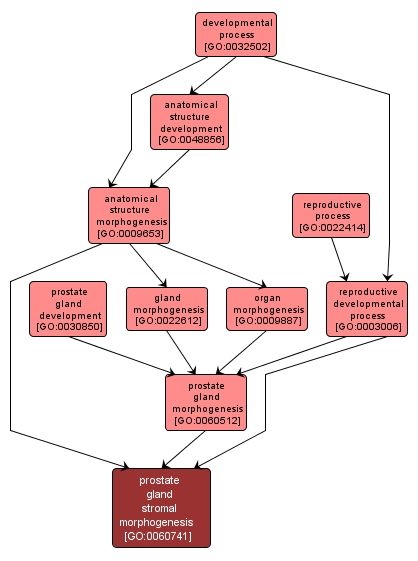GO TERM SUMMARY
|
| Name: |
prostate gland stromal morphogenesis |
| Acc: |
GO:0060741 |
| Aspect: |
Biological Process |
| Desc: |
The process by which the prostate gland stroma is generated and organized. Morphogenesis pertains to the creation of form. The prostate gland stroma is made up of the mesenchymal or fibroblast cells of the prostate gland. |
|

|
INTERACTIVE GO GRAPH
|














